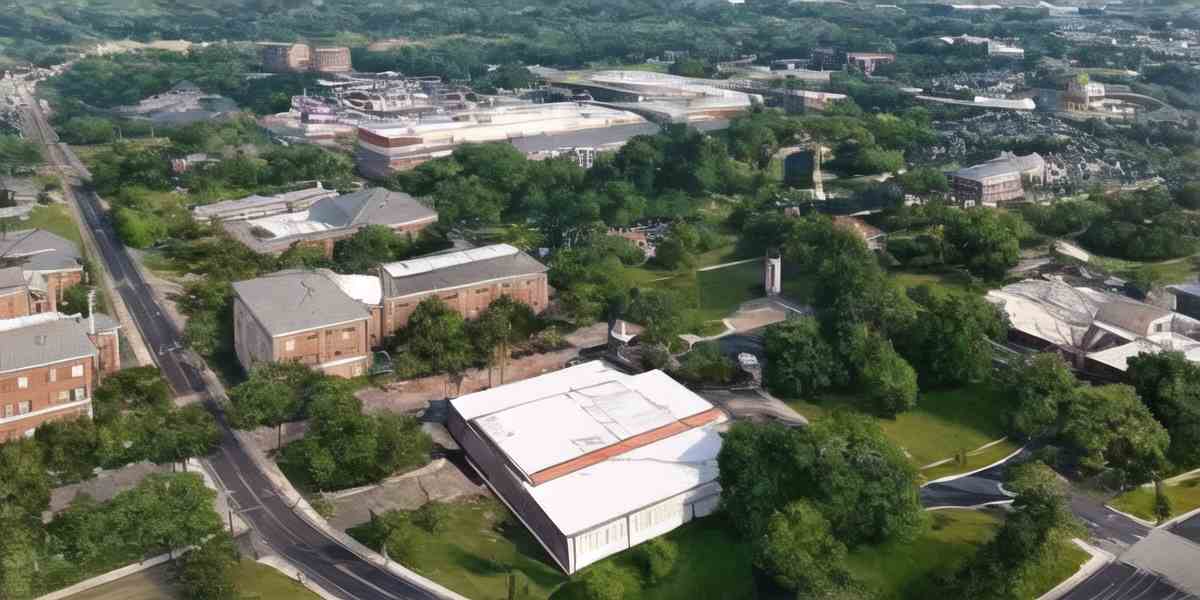University of Mary Hardin-Baylor
2024 USNews Best Colleges Ranking: 394(↓63) (Click for schools/majors ranking)
Abbreviation/Alias: UMHB | MHB | Mary Hardin-Baylor
School Characteristics: Private, non-Profit (4-Years)
Calendar systerm: Semester
Religious Affiliation: Baptist
School Chief: Dr. Randy O'Rear (President)
Website: https://go.umhb.edu/; Phone: 8007278642
Location: 900 College St, Belton, TX, 76513-2599

University of Mary Hardin-Baylor Important Facts
University of Mary Hardin-Baylor Degrees and Majors
University of Mary Hardin-Baylor Ranking and Admission
University of Mary Hardin-Baylor Admission Score Requires
*Numbers at left represent SAT/ACT submitting percentage, numbers on blue blocks represent 25%-75% admission scores
**Drag green block to check data for different years, click blue block to check scores trends
University of Mary Hardin-Baylor Students Diversity
University of Mary Hardin-Baylor Students Age Distribution
University of Mary Hardin-Baylor International Students Trends
University of Mary Hardin-Baylor Campus and Safety
Nearby Top Colleges
Campus Safety
Reference
- University of Mary Hardin-Baylor Official Website
- USNews Best Colleges Ranking
- USNews Bset Global Universities Ranking
- THE World University Ranking
- QS World University Ranking
- ARWU World University Ranking
- US Department of Education College Scorecard
- National Center for Education Statistics
- Forward Pathway US College Ranking Database
 University of Mary Hardin-Baylor Important Facts Trends
University of Mary Hardin-Baylor Important Facts Trends
 University of Mary Hardin-Baylor degrees/majors
University of Mary Hardin-Baylor degrees/majors
University of Mary Hardin-Baylor major details
*Depends on whether majors have graduates in 2022 or not, Yes / No
**Move mouse on can check deitaled graudates number, click for major detailed information
***Due to privacy policy, graduate salaries are not shown for some majors that has few gradautes
| Major | Graduate Salary | Under | Master | Doctor |
|---|---|---|---|---|
| Health/Medical Preparatory Programs, Other. | - | |||
| Marriage and Family Therapy/Counseling. | $50,682 | |||
| Mental Health Counseling/Counselor. | $50,682 | |||
| Mental and Social Health Services and Allied Professions, Other. | $50,682 | |||
| Physical Therapy/Therapist. | - | |||
| Nursing Education. | - | |||
| Registered Nursing/Registered Nurse. | $70,919-$103,672 | |||
| Family Practice Nurse/Nursing. | $70,919-$103,672 | |||
| Geriatric Nurse/Nursing. | $70,919-$103,672 |
| Major | Graduate Salary | Under | Master | Doctor |
|---|---|---|---|---|
| Business Administration and Management, General. | $86,574 | |||
| Logistics, Materials, and Supply Chain Management. | $86,574 | |||
| Organizational Leadership. | $86,574 | |||
| Accounting. | $70,255 | |||
| Business/Managerial Economics. | - | |||
| Entrepreneurship/Entrepreneurial Studies. | - | |||
| Finance, General. | - | |||
| International Business/Trade/Commerce. | - | |||
| Management Information Systems, General. | - | |||
| Marketing/Marketing Management, General. | $56,965 |
| Major | Graduate Salary | Under | Master | Doctor |
|---|---|---|---|---|
| Educational Leadership and Administration, General. | $48,870-$71,766 | |||
| Educational, Instructional, and Curriculum Supervision. | $48,870-$71,766 | |||
| Higher Education/Higher Education Administration. | $48,870-$71,766 | |||
| Superintendency and Educational System Administration. | $48,870-$71,766 | |||
| Elementary Education and Teaching. | $49,475 | |||
| Teacher Education, Multiple Levels. | $49,475 | |||
| Art Teacher Education. | $48,568 | |||
| English/Language Arts Teacher Education. | $48,568 | |||
| Mathematics Teacher Education. | $48,568 | |||
| Music Teacher Education. | $48,568 | |||
| Physical Education Teaching and Coaching. | $48,568 | |||
| History Teacher Education. | $48,568 | |||
| Spanish Language Teacher Education. | $48,568 |
| Major | Graduate Salary | Under | Master | Doctor |
|---|---|---|---|---|
| Clinical Psychology. | - | |||
| Health/Medical Psychology. | - |
| Major | Graduate Salary | Under | Master | Doctor |
|---|---|---|---|---|
| Biology/Biological Sciences, General. | - | |||
| Biochemistry. | - | |||
| Cell/Cellular Biology and Anatomical Sciences, Other. | $58,467 |
| Major | Graduate Salary | Under | Master | Doctor |
|---|---|---|---|---|
| Sport and Fitness Administration/Management. | $49,034-$51,305 | |||
| Exercise Science and Kinesiology. | $49,034-$51,305 |
| Major | Graduate Salary | Under | Master | Doctor |
|---|---|---|---|---|
| General Studies. | $48,551 |
| Major | Graduate Salary | Under | Master | Doctor |
|---|---|---|---|---|
| Information Science/Studies. | - | |||
| Computer Science. | - | |||
| Computer Graphics. | - |
| Major | Graduate Salary | Under | Master | Doctor |
|---|---|---|---|---|
| Graphic Design. | - | |||
| Film/Cinema/Media Studies. | - | |||
| Fine/Studio Arts, General. | - | |||
| Music, General. | - | |||
| Music Performance, General. | - | |||
| Music Management. | - |
| Major | Graduate Salary | Under | Master | Doctor |
|---|---|---|---|---|
| Speech Communication and Rhetoric. | - | |||
| Mass Communication/Media Studies. | - |
| Major | Graduate Salary | Under | Master | Doctor |
|---|---|---|---|---|
| Engineering, General. | - |
| Major | Graduate Salary | Under | Master | Doctor |
|---|---|---|---|---|
| Social Work. | $41,751 |
| Major | Graduate Salary | Under | Master | Doctor |
|---|---|---|---|---|
| Political Science and Government, General. | - | |||
| Sociology, General. | - |
| Major | Graduate Salary | Under | Master | Doctor |
|---|---|---|---|---|
| Criminal Justice/Law Enforcement Administration. | - |
| Major | Graduate Salary | Under | Master | Doctor |
|---|---|---|---|---|
| History, General. | - |
| Major | Graduate Salary | Under | Master | Doctor |
|---|---|---|---|---|
| Pastoral Studies/Counseling. | - |
| Major | Graduate Salary | Under | Master | Doctor |
|---|---|---|---|---|
| English Language and Literature, General. | - |
| Major | Graduate Salary | Under | Master | Doctor |
|---|---|---|---|---|
| Chemistry, General. | - |
| Major | Graduate Salary | Under | Master | Doctor |
|---|---|---|---|---|
| Christian Studies. | - |
| Major | Graduate Salary | Under | Master | Doctor |
|---|---|---|---|---|
| Spanish Language and Literature. | - |
| Major | Graduate Salary | Under | Master | Doctor |
|---|---|---|---|---|
| Mathematics, General. | - |
| Major | Graduate Salary | Under | Master | Doctor |
|---|---|---|---|---|
| Multi-/Interdisciplinary Studies, General. | - |
 University of Mary Hardin-Baylor Schools/Majors Ranking
University of Mary Hardin-Baylor Schools/Majors Ranking
Under Ranking (2024)
Grad Ranking (2025)
*Rankings have been updated to 2025USNews schools/majors ranking, rankings are for reference only
*numbers in bracket represent rankings change compare to last version
 University of Mary Hardin-Baylor Varsity Athletes
University of Mary Hardin-Baylor Varsity Athletes
| NCAA Division III with football | MEN | WOMEN |
|---|---|---|
| Football | 196 | - |
| Soccer | 43 | 34 |
| Basketball | 30 | 28 |
| Baseball | 41 | - |
| Golf | 18 | 13 |
| Other Sports | - | 30 |
| Softball | - | 27 |
| Tennis | 16 | 11 |
| Cross Country | 6 | 13 |
| Volleyball | - | 18 |
| Beach Volleyball | - | 11 |
| NCAA Division III with football | MEN | WOMEN |
|---|---|---|
| Football | 170 | - |
| Soccer | 47 | 33 |
| Baseball | 46 | - |
| Basketball | 22 | 24 |
| Other Sports | - | 34 |
| Track and Field, X-Country | 11 | 17 |
| Golf | 13 | 13 |
| Softball | - | 26 |
| Volleyball | - | 22 |
| Tennis | 8 | 10 |
| NCAA Division III with football | MEN | WOMEN |
|---|---|---|
| Football | 219 | - |
| Soccer | 44 | 31 |
| Basketball | 18 | 23 |
| Baseball | 37 | - |
| Track and Field, X-Country | 11 | 24 |
| Softball | - | 26 |
| Other Sports | - | 23 |
| Tennis | 10 | 10 |
| Golf | 10 | 9 |
| Volleyball | - | 19 |
| Equestrian | - | - |
| Bowling | - | - |
| Beach Volleyball | - | - |
| Badminton | - | - |
| Archery | - | - |
| Rodeo | - | - |
| Sailing | - | - |
| Wrestling | - | - |
| Water Polo | - | - |
| Table Tennis | - | - |
| Track and Field, Outdoor | - | - |
| Weight Lifting | - | - |
| Track and Field, Indoor | - | - |
| Team Handball | - | - |
| Synchronized Swimming | - | - |
| Swimming | - | - |
| Swimming and Diving | - | - |
| Squash | - | - |
| Skiing | - | - |
| Rowing | - | - |
| Rifle | - | - |
| Lacrosse | - | - |
| Ice Hockey | - | - |
| Gymnastics | - | - |
| Field Hockey | - | - |
| Fencing | - | - |
| Diving | - | - |
| All Track Combined | - | - |

 University of Mary Hardin-Baylor Important Facts Trends
University of Mary Hardin-Baylor Important Facts Trends
















































































































































































































































































































































































































































